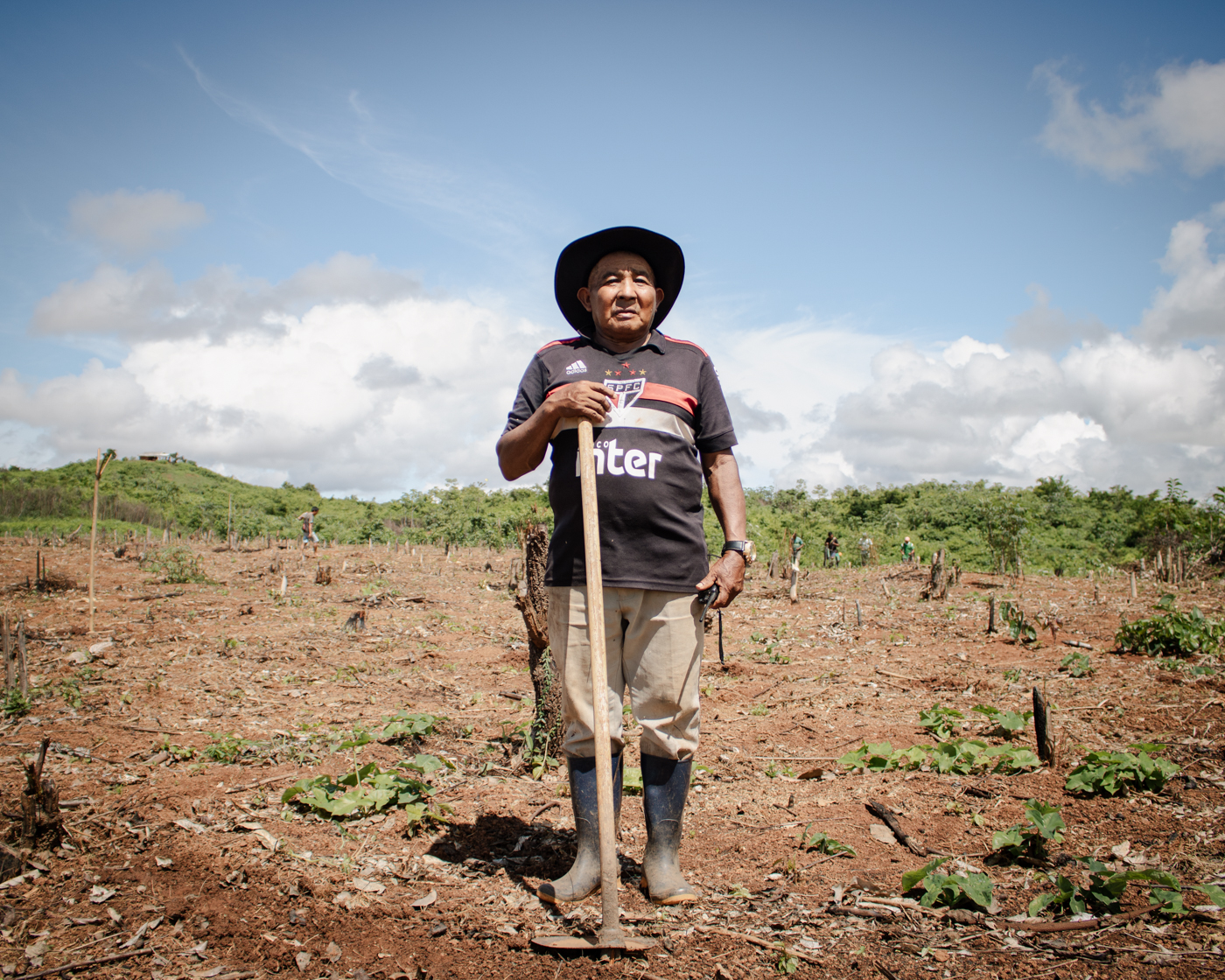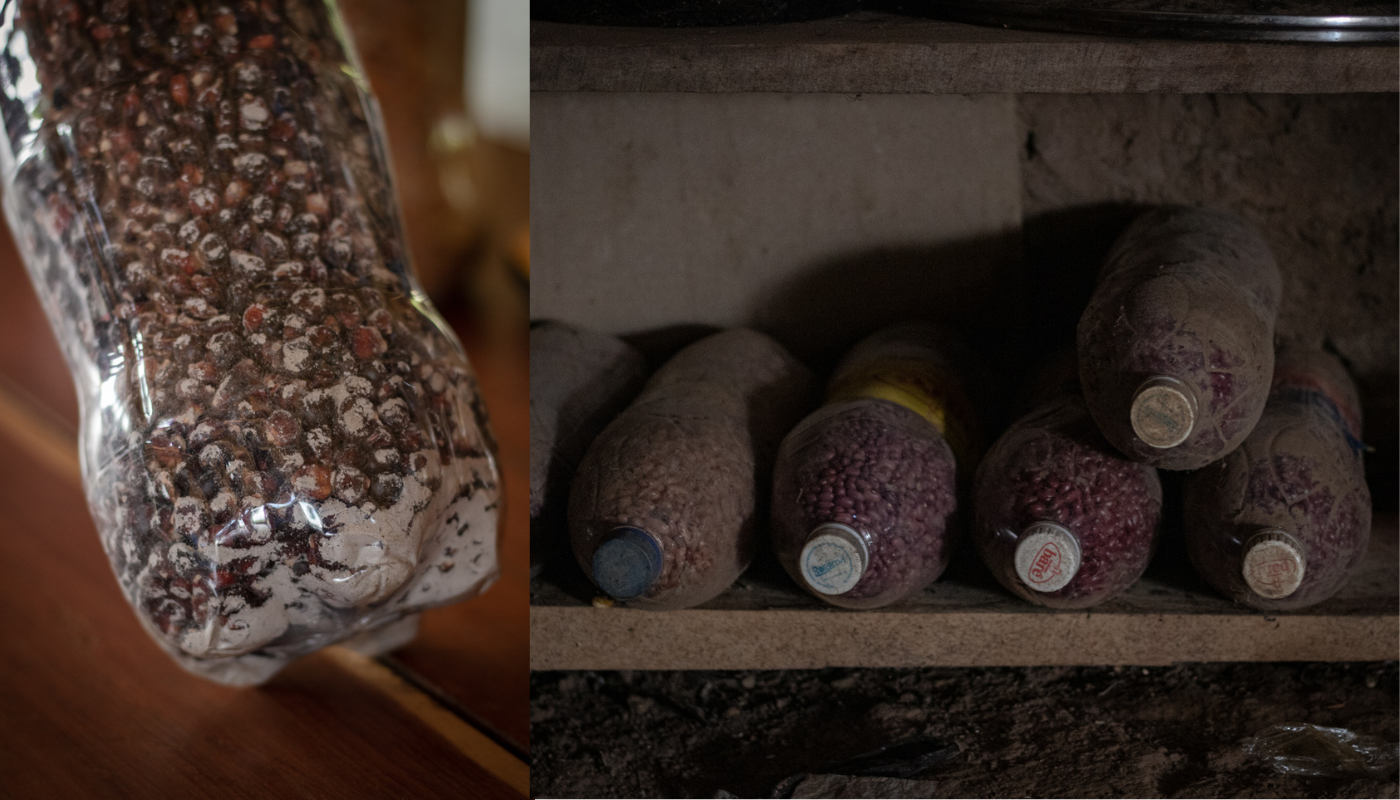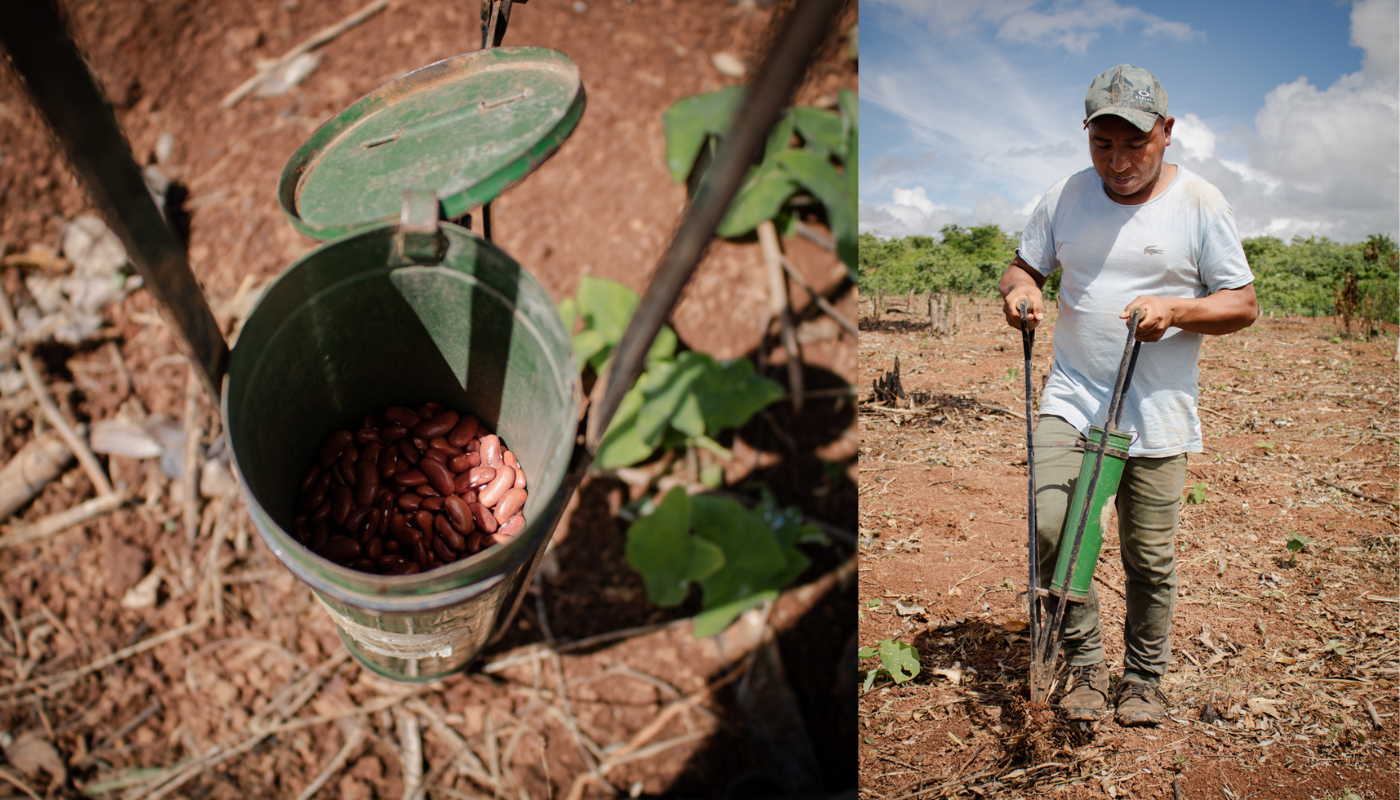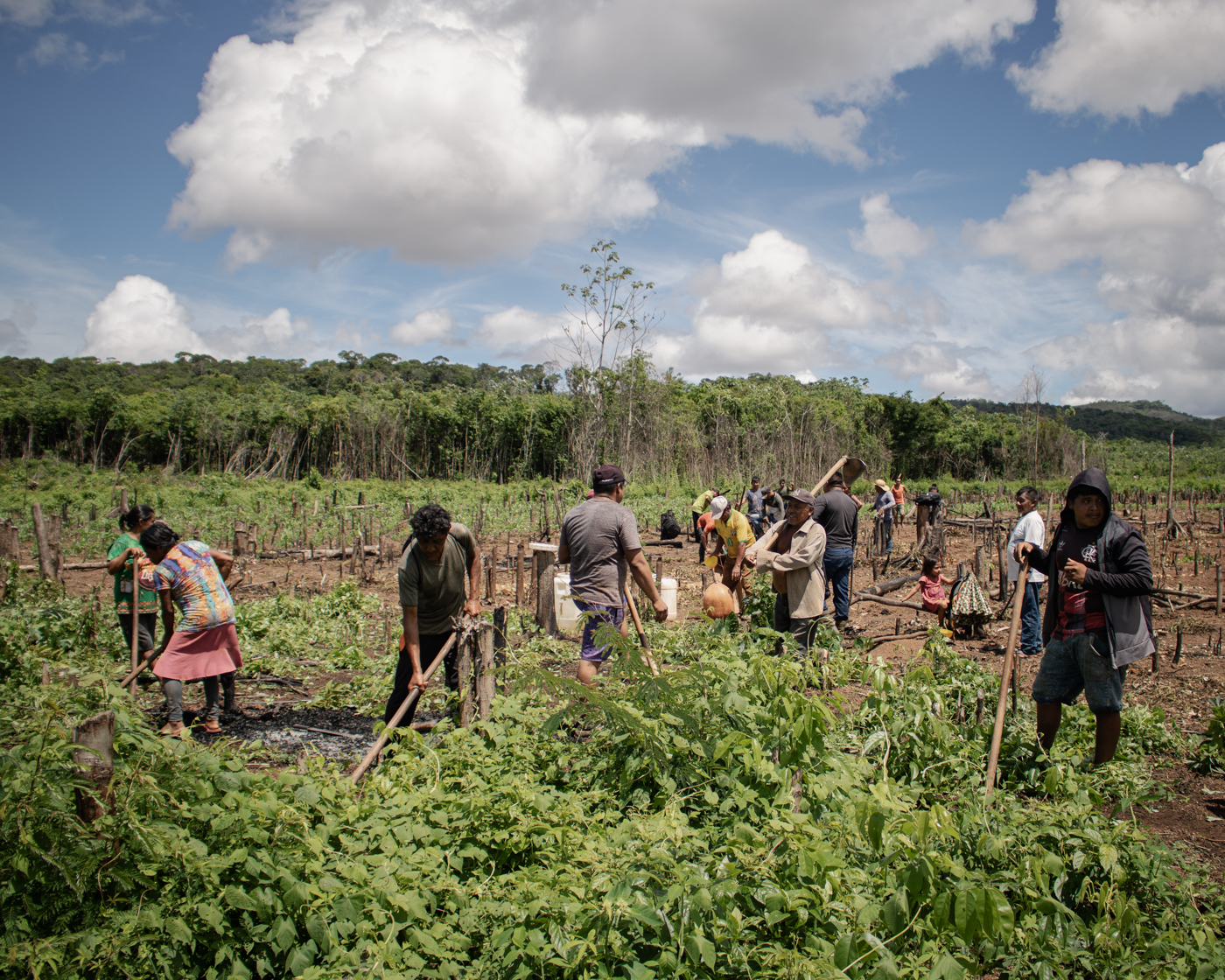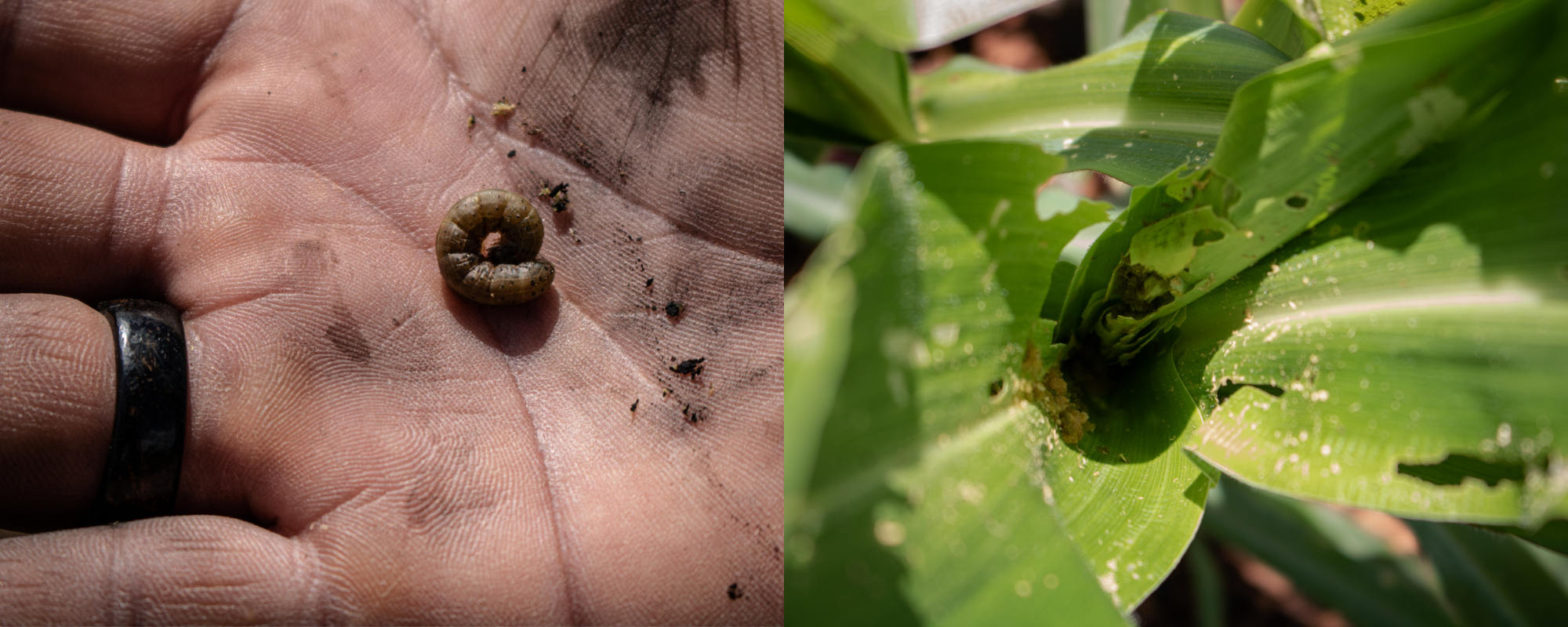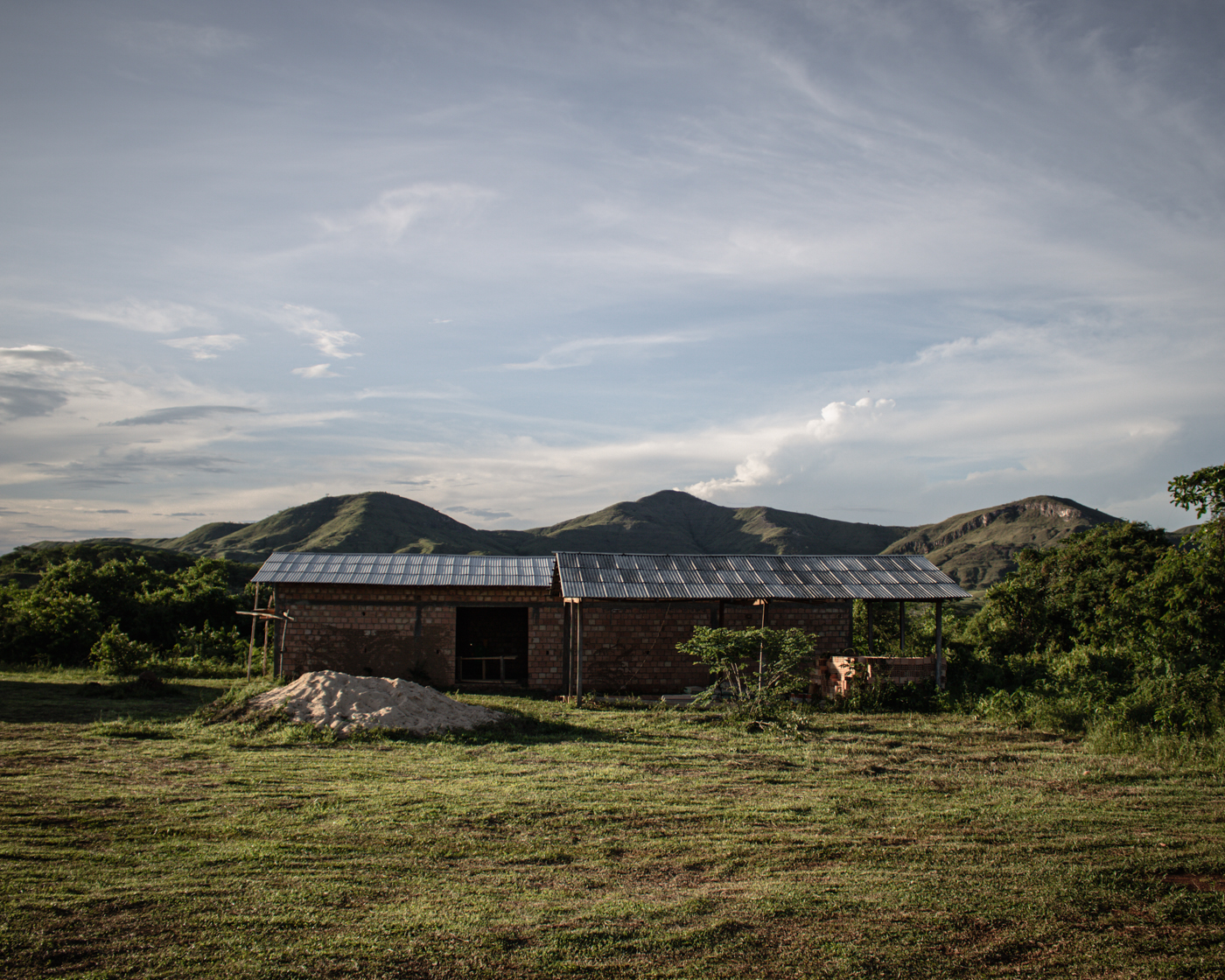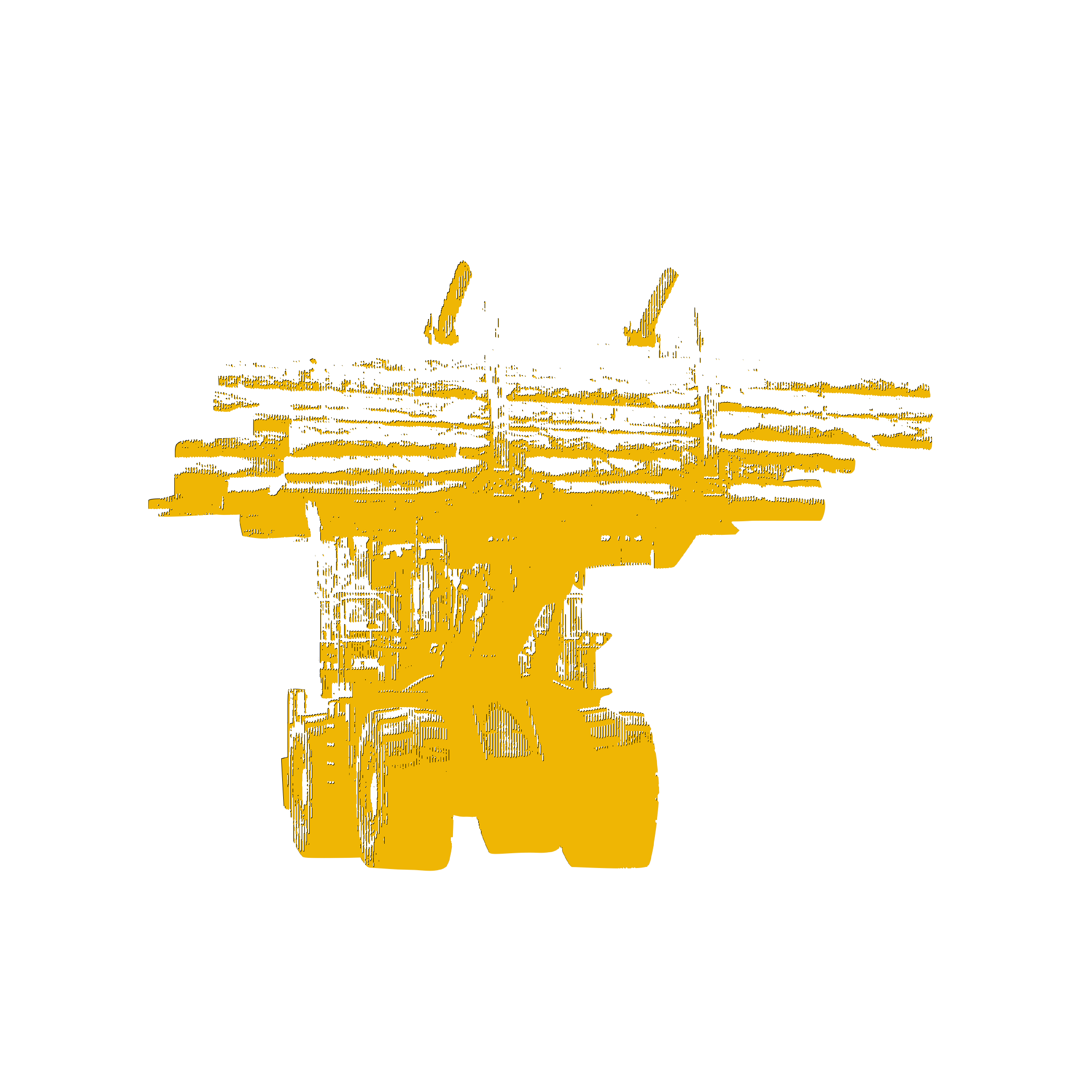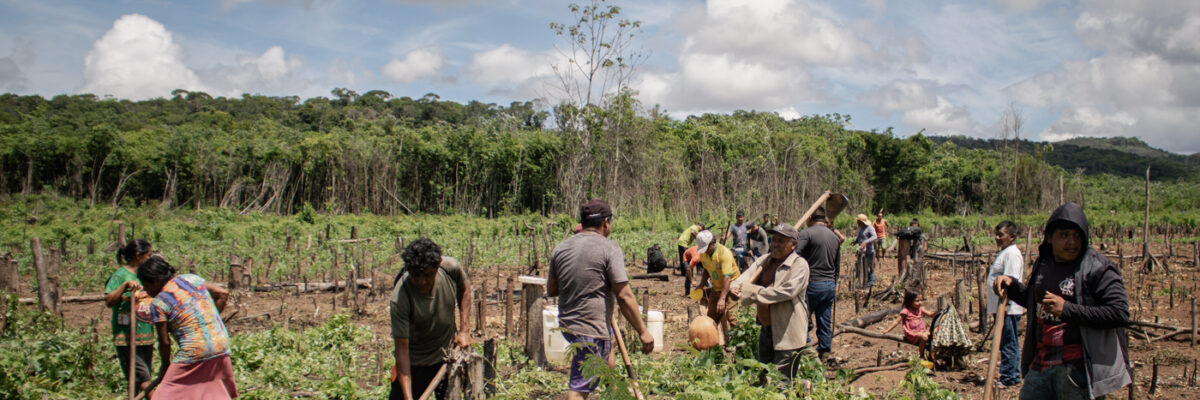
RORAIMA, Brazil — The sun has barely risen as men and women leave their homes to make their way towards the maloca, a tall hut as large as an amphitheater. A single wooden column at the center holds up the 15-meters-high cone-shaped straw roof. There’s enough room for all the residents of the Willimon community as they prepare to work on nearby fields. A communal breakfast is served on a long wooden table. Soon these men and women will head out—farming gear on their shoulders—to help one of the local families clear their land for seeding. As tradition dictates, the owners of the land will offer lunch and provide a day’s worth of caxiri, a traditional beverage made of fermented cassava, which will nourish the workers and quench their thirst. For as long as the sun is up, they will all weed the fields together.
Raposa Serra do Sol Indigenous territory, where the Willimon community is located, encompasses 77 communities divided into nine sub-centers. The Willimon center, named after the community it is closest to, is the largest, congregating 19 communities. The communities’ organization is an important attribute of Indigenous governance in the northern state of Roraima. It is distinguished by its horizontality: Every collective decision, no matter how big, is deliberated collectively in assemblies held in the malocas. This allows communities to bring even the most locally specific demands to levels of higher decision-making. It also allows for projects like the seed bank to become a reality.
“Around 2019, when I was the coordinator of the Willimon center, we realized that our traditional seeds were endangered, and we were concerned for their future survival,” says Amarildo Mota, one of the founders and the former coordinator of the seed bank. “So we came up with the plan for the seed bank and presented it to our Indigenous leaders during an assembly. Everyone welcomed the idea,” he adds.

As a nonprofit journalism organization, we depend on your support to fund journalism covering underreported issues around the world. Donate any amount today to become a Pulitzer Center Champion and receive exclusive benefits!
Since then, the families living in the 19 communities that make up the Willimon center have been the guardians of the traditional-seed bank. They work to safeguard and multiply a wide variety of traditional seeds.
At about 380 km away from Boa Vista, capital of the state of Roraima, Willimon is not easy to reach. The rough conditions of both the highway and the unpaved roads make for a nearly seven-hour-long journey only possible on a four-wheel drive vehicle. Along the way, soy and corn monoculture plantations contrast with the wilderness of protected Indigenous areas.
Raposa Serra Sol is one of the largest Indigenous territories in Brazil, with an area of roughly 1.7 million hectares. Its process of demarcation (boundary marking), which started in the 1970s, was marked by decades of land conflicts with illegal settlers, particularly rice cultivators, leading to the killing of dozens of Indigenous leaders. It was only in 2005, during the first term of president Luiz Inácio Lula da Silva, that the territory’s borders were homologated, recognizing the Indigenous right to the land, and determining the withdrawal of invaders. While local communities managed to remove invaders, the process of recovering the biodiversity lost to rice monocultures is ongoing. After more than 15 years during which local communities gave the land the chance to heal, the original vegetation is getting closer to what it used to be.
“The expansion of monoculture in our state is still a big concern for us”, says Kelliane Wapichana, State Coordinator of the Women’s Movement and former member of the Environmental Department of the Indigenous Council of Roraima (CIR). “Besides representing a health hazard, when these modified seeds get mixed with our traditional ones, they become a threat to their continuation,” says Wapichana.
And guaranteeing this “continuation” for future generations is exactly what led to the creation of the seed bank.
But the Willimon Center’s seed bank is special. It is much more than just a physical place where seeds are kept. At Willimon, the seed bank is alive: each member of the 19 communities is one of its building blocks.
Inside every family home, a corner protected from sunlight holds dozens of plastic bottles filled to the top with varieties of bean and corn grains. In the old days, the seeds were kept inside cabaças, dried bottle gourd plants. Today, plastic bottles do a better job at keeping the seeds dry and preserved.
“We use ashes to conserve the seeds,” Mota recounts. “With the ashes inside the bottle, the grains get more resilient. The ash also keeps them safe from pests,” he adds. Mota explains that, once stored using this method, the seeds will remain good for consumption for up to three years, but will only be fertile up until the following planting season. After the first year, they will no longer sprout or produce new seeds to further the existence of the bank.
This living bank involves entire communities and the outcome of all crops, be they communal or of an individual family, contribute to its survival and prosperity. At Willimon, residents always come together to help one another thrive. People in the community have known one another for generations, and they know what needs to be done. So, every year, when it’s time for preparing the land or seeding, all adults join forces to work on each and every farm.
“That’s how we Indigenous people work: collectively,” says Hélio Afonso, current coordinator of the seed bank. Afonso speaks in broken Portuguese. His first language is that of his people, the Macuxis, but he was forced to learn Brazil’s official language at school when the country was under a military dictatorship that imposed a developmentalist government, particularly in the Amazon region. “We work for the social development of all families. Our work is collaborative, not individual”, he adds.
The breakfast served in the maloca is offered by the family whose farm the community will weed during the day. Around the table, residents joke around, competing at who is the better grower or who has the most variety of seeds.
“It makes me so happy to see how the communities themselves appreciate and value what is available in their own territories”, Wapichana says. “It is so meaningful and powerful how they really want to strengthen the traditional seeds.”
For the seeds to proliferate, however, the one year limit on the conservation period is not enough. They have to be planted during the right season, when rain is abundant, especially considering that the communities don’t use artificial irrigation systems. In the Amazon, that season is winter.
Furthermore, according to traditional Indigenous knowledge, there are other elements that must be respected. One of them is the moon phase. “When it’s a new moon, we can’t plant the seeds”, Mota explains. “If we do, the crops may be good for consumption, but not for further planting. Besides, the new moon is the period when plants are more prone for pests.”
That is why Carlos Clementino, of the Macuxi people, is planting his beans and corn right now. Clementino is a traditional resident of the community, respected for his long-standing presence and deep local knowledge. Across his fields, plastic bottles filled with grains are used to refill the manual seeders. “When the moon phase changes, we won’t be able to keep seeding, as we are planting to multiply the seed bank.” He explains that this knowledge was passed on to him by his father, who learned from the generations that came before him.
Since its start, the bank has organized numerous markets and has donated seeds to other communities, like the Raposa Serra Do Sol Indigenous Training and Culture Center, the State Youth Crops, and the Yanomami Indigenous territory, where they have thrived. Today, after years of collective efforts, the traditional seeds are no longer endangered. “We have more than 26 varieties of beans alone,” Mota says.
A few weeks ago, the traditional seed bank inaugurated its own headquarters in a small brick house located a few hundred meters away from the maloca. Now residents will always know where to find the seeds they are looking for. Mota explains there will be an internal regiment to keep track of every farmer who withdraws seeds, and to make sure that they will always be replenished.
This, however, will add to, rather than replace the live seed bank which exists today.
“Our seeds, they are alive. They represent the historical process of our ancestors in our territories. They are not homogenous, they don’t have one single color: they are multiple and varied”, says Wapichana. She continues, “These seeds are definitive proof that we have long inhabited the territories we fight to preserve.”
